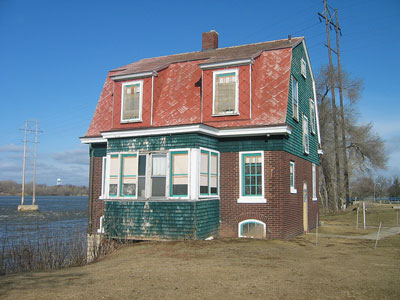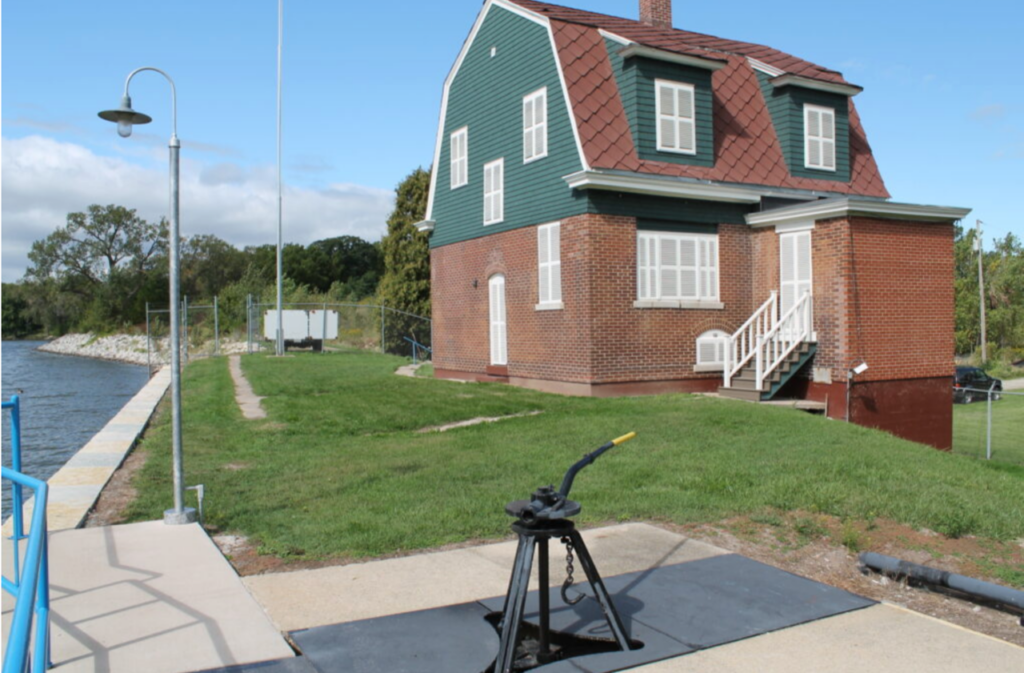
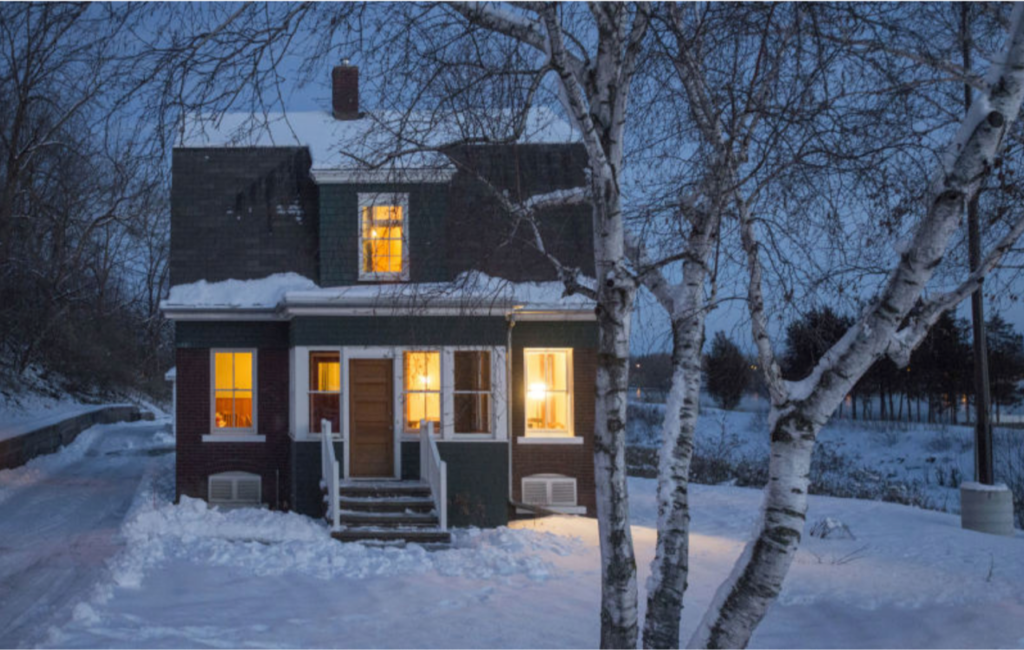
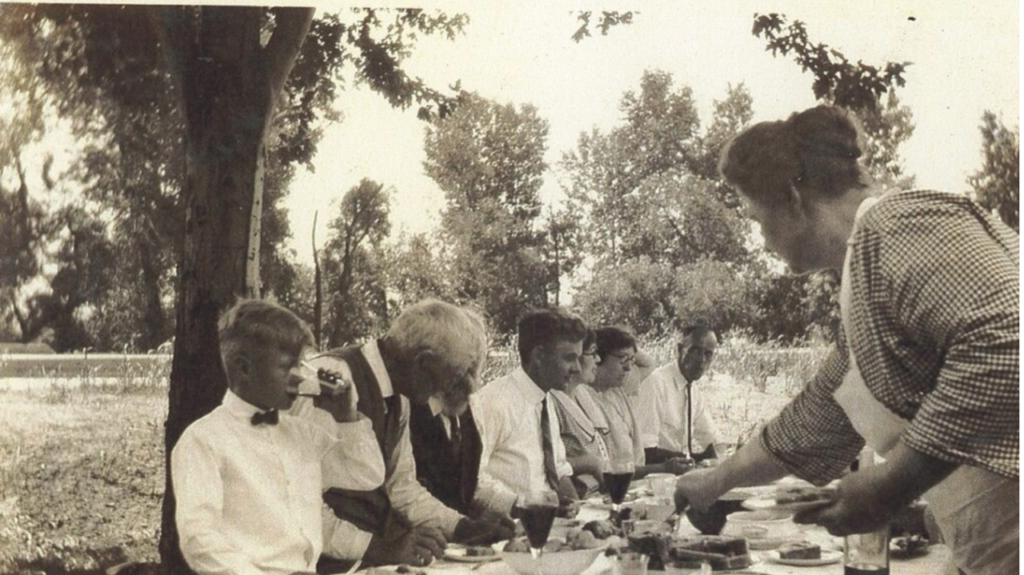
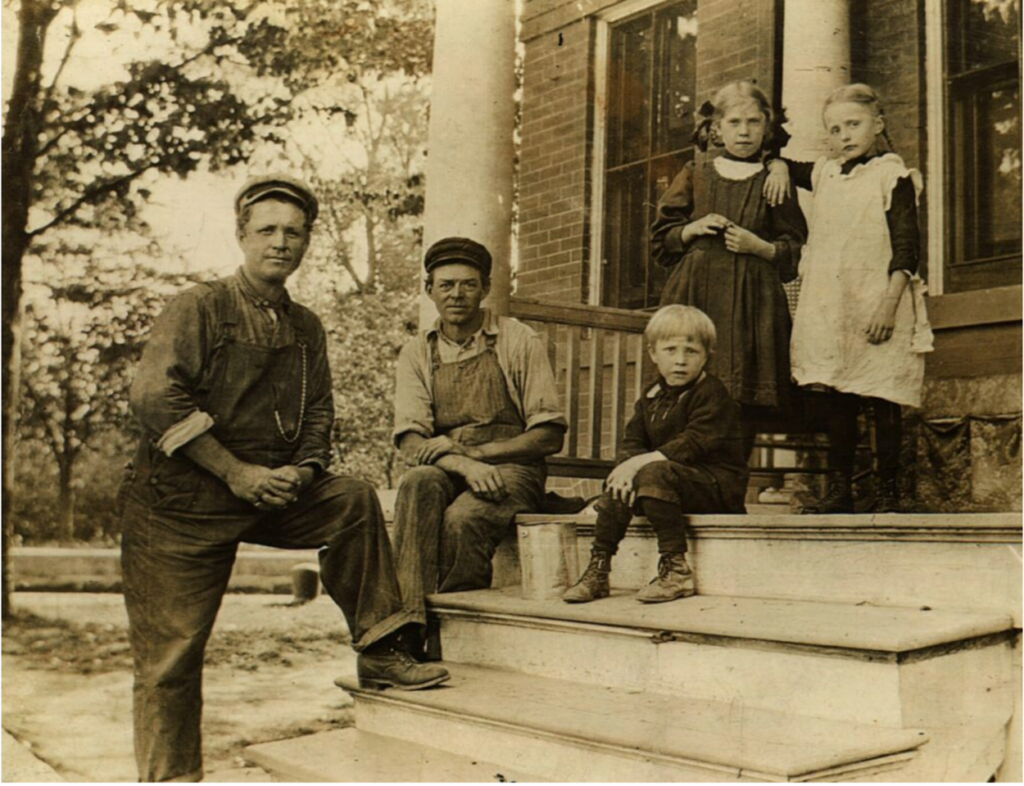
Roll the clock back to 1900 and the Fox River was jammed with commercial traffic all tooting horns to get through the locks at any hour. When boats blew their horns, there was a saying: “one for danger, two for dock, three for bridge, and four for lock.”
That’s when lock masters and their families lived in homes located at the lock so they were available 24/7 to open the gates. The job required constant availability and lock masters logged the number of boats, cargo tonnage, passengers, weather conditions, and river levels. They were frequently the first responders to recover people or cargo swept away by strong river currents. They maintained the unique mechanisms of the locks and kept the navigation channel open for traffic.
When not on duty, the families of the lock tenders enjoyed the unique home sites and tended gardens, hosted family celebrations, and taught their children to swim in the lock chambers. This was part of a long history of handing lock tender and lock master jobs down from father to son—many of their relatives still live in the region today.
Nine of the original twelve Lock Tender Homes remain, two have been restored, and all have had foundations and exteriors stabilized.The years they were built span from 1892-1927 and can be found at these locks:
